Computer science is full of interesting things. Since it is already inseparable from the business, you should know some basic concepts to understand better what innovative technologies are already here and what opportunities you can use to benefit your business. In this article, we propose going back to the basics and clarify the difference between system and application software.
Spoiler! System software and application software aren’t the same things. Nowadays, application software is essential for business development; however, you can’t do without system software.
Software Definition And Its Types
Software is a complex concept that unites programs, scripts, scenarios, and instructions for computers, mobile devices, and other specific equipment. Since the term is general, there are a lot of software types.
System and application software
The system software is a platform designed to run and use other software. For example, any operating system belongs to this category.
Application software is a program that helps users with performing a specific task. It operates based on system software.
Freeware and shareware
Freeware is a program that is distributed and may be used for free. Freeware usually refers to application software since system software usage frequently requires you to pay for the license. So, the examples of freeware are Google Chrome, Instagram, Trello, and others.
Shareware refers to applications that are distributed for a fee. As a rule, there is a subscription price that users should pay to be allowed to use an app for a certain period of type. Recently, these types of apps have been taking the form of a Software as a Service (SaaS), which allows users to pay only for the features they use (for example, Amazon AWS).
Open and closed source software
Open-source software means that the program has a freely available code that may be changed and reused for other programming projects. It would seem that system software can’t be open-sourced; however, Linux OS breaks that stereotype.
Closed-source software. Logically, there is no opportunity to access the code if it is closed-source software. Often, closed source software requires users to pay for the license; however, there are also free or in-build purchases apps. As for the examples, closed-source software may cover a lot of software types. Java is a closed-source programming tool, Skype is a closed-source application software for instant communication, and Apple’s iOS is a closed source operating system.
Mobile and desktop software

Mobile software. This subtype of software covers all the systems and applications developed for mobile devices, for example, mobile-specific operating systems and applications.
Desktop software. Logically, desktop software refers to the programs and systems that are created for desktop computers. Embedded software is one of the subtypes of desktop software.
Software for other devices. Other devices also work with the help of an operating system (system software) and are equipped with additional programs (applications software). Apple Watch is powered by watchOS and has built-in apps for activity tracking.
Other types of software
Computer programming tools
Programming software deserves its own spot on this list. It doesn’t fit any of the categories. However, without it, the creation of all other types of software would not be possible. The developers use tools to create different programs and applications, such as programming languages, frameworks, databases, SDKs, IDEs, and other highly-specific tools.
Utility software
There is one more unclassified category for utility software. This type of software is used to serve other programs. For example, CCleaner is intended to clean the system software, such as Windows and Google’s Chrome cash (application software). These tools make the operation of system and application software seamless and healthy.
As you can see, system software and application software are two core categories since they may take the form of free or paid, open or closed-source programs. That is why we will stop their analysis in more detail.
Already have a great idea and need technical experience to realize it? KeyUA’s experts are happy to advise and help.
Drop Us a LineSystem Software Explanation, Functions, and Examples
According to the research, “System software is computer software designed to operate the computer hardware to provide basic functionality and to provide a platform for running application software.”
The most obvious example of system software is an operating system for desktop or mobile; however, that is not the only category. As a rule, the system software is classified into the following categories.
Operating systems. Well, everything is quite clear with operating systems. They may be developed for mobile (Android, iOS) and desktop devices (Windows, Linux), be open or closed source.
Device driver. This system enables connections between the main device (desktop computer, notebook, or smartphone) and additional tools (mouse, keyboard, flash drive, earphones). The user should download and install the driver to make the connection between two devices happen.
Firmware is a type of system software that enables low-level control between the main and additional devices, for example, a desktop computer and a flash drive.
Translator. With this software’s help, a computing device understands the user’s request and translates it into the machine language to fulfill the request. And vice versa, when something happens with a system (for example, memory is ruining out), the translator transforms machine language into human’s one to notify the users.
Utility. As we’ve stated, this is a serving program that ensures the system and application software work properly at the same time. For example, Kaspersky antivirus protects users when they surf the Internet with the help of application software (Opera) and prevents trojans and other malware from entering the system software.
There are three core functions performed by system software:
Allocate system resources
Monitor system activities
Disk and file management
What Is Application Software in Computer Science

According to the research, “Application software is a program or group of programs designed for end-users; allows end-users to accomplish one or more specific (non-computer related) tasks.”
Simply put, these are programs that we use every day without even thinking about it - when we check the weather for tomorrow, ask Siri to make a call, answer messages on Skype, and edit photos for Instagram.
Have you been thinking about application software development for your business? Here and now is an excellent opportunity to get started! We have the technical experience to help you with the creation of software of any complexity.
Reach Out to UsSince in application vs. system software, the first refers to task-driven and goal-specific tools, there are a lot of application software types. We will list the main types below.
Database software - for example, Oracle.
Word processing tools include Microsoft Word, Google Docs, Google Translator, and others.
Communication applications cover a wide variety of email services, instant messengers, conferencing, and social media tools.
Enterprise solutions solve specific tasks of businesses. For example, it may be a CRM system or an AI-powered fraud detection model.
Engineering tools include frameworks and IDEs.
Multimedia applications help with accessing multimedia content. They are web browsers, branded apps, and multimedia players.
This list could be expanded to include lots more industry-specific tools, each of which solves specific problems. That is why there are so many functions application software can perform—recruiting processes, weight loss, student training, retail sales, real estate renting, medical data management, etc. As for the general functions, application software helps to improve productivity, boost creativity, organize and optimize the workflows, gather, manage and analyze data arrays, step on the path of a healthy lifestyle and communicate better.
Interesting fact! A relative novelty of 2020-2021 is pandemic related projects. For example, some apps offer coronavirus testing, VR games, contact tracing, and crowd management solutions.
System Software vs. Application Software - The Comparison

Let’s finalize by comparing the difference between system software and application software.
System Software | Application Software | |
Definition | System software serves as a platform on which application software is deployed. | Applications software can’t run without system software. |
Development language | The system software is created with the help of low-level coding languages since it makes it easy for the system to communicate with other add-ons and apps. | Application software is developed using high-level programming languages since these tools are directly connected to a specific function and are fully custom solutions. |
Installation | The operating system as a part of system software is installed once. All additional features and add-ons may require a one-time installation of a driver. | Application software can be installed or uninstalled depending on the user’s preferences and necessities. |
User interaction | It runs until the device is turned off. | Requires a user’s request to get started. |
Dependency | Runs independently | Can’t run independently |
Access | Can be accessed for free or for a fee | Can be accessed for free or for a fee |
Requirement | The main requirement for system software is its safety and ease of use. | The application software should meet the requirements of the system software. For example, native mobile apps should have the best features demanded by a specific operating system. |
Examples | Operating systems, translators, device drivers, firmware | Any application developed to perform a specific task. |
Conclusion
As you can see, the term software covers a wide variety of concepts. System software and application software are the main software types. The application software can’t run without system software, while system software doesn’t make sense without application software. Application software development is promising for any business. With its help, you may solve a lot of problems in one place, such as optimizing your business processes, gathering data, and improving customer relations. The only thing that remains is for you to decide what to create to achieve your business goals and contact an experienced development vendor.
KeyUA has a lot of practical experience in application software development, and we will be happy to share our knowledge and expertise with you.
Start My App Soft Creation!







 UA, Kyiv, Business Centre Gulliver
UA, Kyiv, Business Centre Gulliver

Comments
Leave a comment